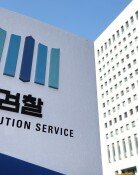Koreas Developing Derivatives Market
Koreas Developing Derivatives Market
Posted November. 25, 2005 08:29,
KGSM at the forefront of the financial engineering-
Established in 1996, the KAIST Graduate School of Management (KGSM) is the first school in Korea with a financial engineering course which combines finance and engineering.
The courses offered in this school cover a wide range of studies, from basic subjects like management mathematics, financial information technology, investment analysis and financial engineering, to more sophisticated ones like insurance, futures, option, securities analysis, and financial risk management. Every financial engineering major student must spend one semester at a U.S. university during the four-semester course.
Domestic financial institutions have set out to develop derivatives to meet the rising demand, and graduates of KGSM are displaying their shiny talents along the way.
Woori Bank, which is recognized as being the best in product development among Korean commercial banks, has 30 employees working at its derivatives team, and eight of them are KGSM graduates.
Korea Development Bank, which sells the most derivatives among all the domestic financial institutes, also has six graduates of the school working at the department of financial engineering.
Against this backdrop, the financial sector is seeking greater help from KGSM.
On November 2, Kookmin Bank concluded a derivatives research deal with KGSM to obtain assistance from the school in developing new derivative products.
In order to become the top bank in Koreas derivatives market, we decided to join hands with KGSM, which is Koreas best school in the field of financial engineering, said Moon Il-soo, the head of the banks derivatives business team.
Foreign banks are dominating the derivatives market in Korea-
It has been less than a decade since derivatives were introduced in Korea, but the market is rapidly expanding. Money invested in derivative products offered by domestic financial institutions totaled 302 trillion won in 2001. but it is now estimated to be 1,534 trillion won as of the end of June this year.
Derivative products are a means to avoid risks from fluctuations in interest rates and exchange rates. With sustained low interest rates, investors looking for high yields are showing keen interest in this kind of product.
However, domestic financial institutions are not daring to develop derivatives for themselves. This is because they still lack the state-of-the-art financial technology which is necessary to design a product and diversify related risks.
Consequently, Korean commercial banks are purchasing even the most basic derivatives such as Equity Linked Deposits, which offer bonus interest rates in relation to the stock price index, from worlds top investment banks like Goldman Sachs or JP Morgan to resell it to customers afterwards.
While the proportion of derivatives in domestic banks total operating profit was a mere 3.5 percent last year, 87.5 percent of total profit of foreign banks branch offices in Korea come from derivatives sales, said KGSM professor Byeon Suk-joon.
Jin-Young Hwang buddy@donga.com



![“한동훈, 정치생명 걸고 무소속 출마해 평가받는 것 고려할만”[정치를 부탁해]](https://dimg.donga.com/c/138/175/90/1/wps/NEWS/IMAGE/2026/01/19/133186982.1.jpg)


![[한규섭 칼럼]왜 여당 지지율은 떨어지지 않는가](https://dimg.donga.com/c/138/175/90/1/wps/NEWS/IMAGE/2026/01/19/133189257.1.png)
